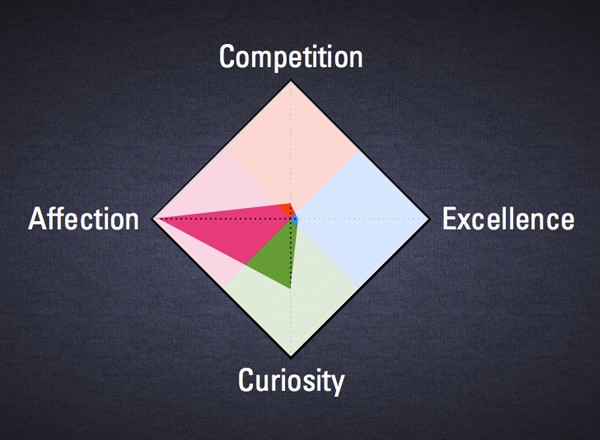Given how much I like teaching, last week for me was great: I had to speak at UX Conference 2011 in Lugano, and I got an invite to give a lecture at Digital Accademia near Venice the day before. The topic was one of my core subjects: Social Experience Design, tailored for the specificity of the two different events.
Even if I was speaking mostly about design, I added some elements of business, strategy and change management as well, because I thought they were relevant.
I admit, this is a quite dense presentation, I would have probably taken out some topics in hindsight at least for UX Conference, trying to be more focused. However, on the plus side, from the feedback I got it was really successful and lots of people asked more. I probably need to do more workshop and less speeches in the future. :)
One method, two tools, three business tips. This is how I organized the presentation, in order to be not too unbalanced toward design, even if that was the focus, but also not being too high for more hands-on people.
One method
The most important part of Social Experience Design is that it can’t be done without a shift from traditional, deterministic thinking to the different Theory of Complexity thinking. This shift is critical because it’s the only way to deal with complex systems, such as people and social dynamics.
That’s why I talked again of the Dot Loop, because it contains all the factors that needs to be built-in in any design – well, in any company – to be really effective. The Dot Loop is an effective abstraction to deal with complex systems without a banalizing approach to them. Every successful company work that way – even, of course, probably they don’t call it Dot Loop, even if I’m starting hearing about it more often. :)
Two tools
The first tool is the Motivational Diamond, a very simple comparative visualizations that helps anyone working with social dynamics to focus on the four Relational Motivations (Competition, Excellence, Curiosity, Affection) and compare different services or parts of the service.

The second tool is the Social Usability and its Checklist, prepared to simplify the approach to it and provides an easy mnemonic. Social Usability works on four factors, that are Relations (the other), Identity (you), Communication (the channel between you and the other) and Emergence of Groups (all the emergent dynamics, again a complex system behavior).
Three business tips
These are very simple, but are also a very important part of a real change management process:
- Be in-the-flow. This is critical in any good design tied to any change management process, but also for startups that are launching a new product: you have to understand that the day of your user is already
- Be a double-pyramid business. This is a very important aspect, and might be an article by itself. Luckily it is: I wrote about the double-pyramid some time ago. This means that social businesses needs to engage in a different structure and find a balance between hierarchy and socialization, because the solution is in that balance and not in building a full hierarchic company or a full flat company.
- Be a double double-pyramid business. Plus, you can’t be really a social business externally if you aren’t internally. You might have a unit that does customer service or social media operations, but if the whole company isn’t aligned, the users will get that, and the rewards are going to be lower (not zero, but lower).
The workshop
The extra part I prepared for Digital Accademia’s workshop regarded a couple of exercises to allow people focus a little more on how to use actively Relational Motivations and Social Usability.
I prepared two exercises to stimulate thinking and discussions:
- In pairs, draw a Motivational Diamond
This is very interesting because it helps clarifying the four Relational Motivations by discussing it with a peer, and then the public discussions allow to clarify even more. As often happens in workshop, I learned something also this time: I have to clarify better that we are talking about traits that trigger relational aspects. For example, when we talk about “excellence” we aren’t talking about an excellent content, but about how we are promoting people’s excellence… and narcissism. :) - In isolation, pick an item from the Social Usability Checklist and design an interface for it. Then, merge it with your partner to create a new UI with the two you prepared.
I liked this one a lot because it shows how very simple solutions and interface can trigger more complex behaviours. One of the participants was worried because her solutions looked “too simple” but actually… that was the value of it! :)
A small joke
At UX Conference I was the last one of the day, so I had to think of something. That’s why I started with a small design practical joke… but I won’t tell what it was, and I removed it also from the presentation above. You’ll see the next time, maybe. ;)